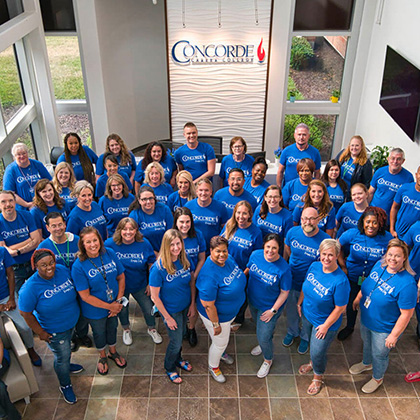Concorde Staff

Most people have heard the term CPR and have at least a basic understanding of what this term means, but if you asked many have they ever heard of BLS, you'd probably get the answer "no". However, BLS and CPR have a lot in common, let's find out how.
What is BLS
According to the American Red Cross*, BLS generally refers to the type of care that first-responders, healthcare providers and public safety professionals provide to anyone who is experiencing cardiac arrest, respiratory distress or an obstructed airway. It requires knowledge and skills in cardiopulmonary resuscitation (CPR), using automated external defibrillators (AED) and relieving airway obstructions in patients of every age.
"BLS is usually the common term/word for CPR," says Omid Parto, Academic Dean at our Garden Grove Campus. "In reality, BLS is an advanced CPR course and AHA (American Heart Association) certification for healthcare service providers is only titled as BLS."
Who should get BLS training
The BLS courses are designed for healthcare professionals and other personnel who need to know how to perform CPR and other basic cardiovascular life support skills in a wide variety of in-facility and prehospital settings. BLS is geared towards prehospital providers, like EMTs, paramedics, firefighters, and in-facility hospital providers.** However, anyone may take the courses if they so choose.
What do you learn in a BLS course
Your training in a BLS course will help prepare participants to promptly recognize several life-threatening emergencies, give proper chest compressions, deliver appropriate ventilations and provide early use of an AED (automated external defibrillator).**
What's generally covered in the course*:
- Rapid assessment and visual survey
- CPR/AED for adults, children, and infants
- Obstructed Airways
- Opioid Overdoses
- Critical thinking, problem-solving, communication and teamwork
- The emergency medical services system
- Legal considerations
- Precautions
Basic BLS Steps
There are some basic high-level steps that apply to most scenarios, according to the American Red Cross*, which are assess, recognize and care. The assess, recognize and care concept is a systematic, continuous approach for rapid assessment, accurate recognition and immediate care in emergency situations.
The basic steps are:
- Performing a visual survey to assess for safety, formulate an initial impression of the patient and determine the need for additional resources.
- Checking responsiveness
- Opening the airway and simultaneously checking for breathing and a pulse if the patient is unresponsive
Once the assessment is complete, provide care based on the conditions found.
Ways to BLS train
Basic Life Support (BLS) is available in two different training methods which are classroom training and online blended training. Both options teach the same AHA science-based skills and result in the same AHA BLS Course Completion Card.
To find a BLS course near you, the easiest way is to go to either the American Heart Association find a course or American Red Cross BLS classes and use their search features for training and certifications.
There are also accessible versions of the courses for those with hearing, vision, and/or motor impairments. Just contact your local training center to learn more about their accommodations or visit the shopCPR.heart.org site.
How long are courses
According to the AHA course descriptions**, the online course and instructor courses have varying lengths. The online course is broken into two sections, online Heartcode BLS which takes 1 to 2 hours along with a hands-on skills session which varies from 70 minutes to 2 hours - all depending on the experience of the student.
The instructor-lead BLS course takes around 4.5 hours to finish, including the skills practice and then skill testing. BLS renewal courses takes roughly 3 hours to complete. This course time is based on 1 instructor, 6 students, and 2 manikins.
The BLS course completion cards, which prove you passed the course, are valid for 2 years for both the online and instructor lead courses.
Concorde offers BLS
Concorde's Garden Grove campus also offers a BLS/CPR class that's open to the public and only costs $45 per person ($35 for Concorde graduates) which is comparable to other courses. These are BLS only and not Heart Saver or Instructor training. They are meant for healthcare providers. Quick note, this course is not part of any academic program, nor does it count for academic credit.
If you've been thinking about getting certified or are needing to get re-certified, Concorde's Garden Grove campus may be able to help you. If you don't live in the Garden Grove area, no problem, just use the information above to find the closest training center to you.
Resources:

Take The Next Step Towards a Brighter Future
We have a Concorde representative ready to talk about what matters most to you. Get answers about start dates, curriculum, financial aid, scholarships and more!



